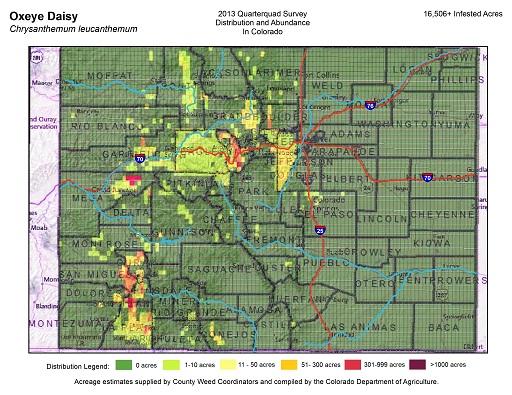Oxeye daisy
(Leucanthemum vulgare)
Oxeye daisy was introduced from Europe as a seed contaminant and as an ornamental. It is a rhizomatous, creeping, short-lived perennial that grows 10 inches to 2 feet tall. The basal and lower leaves are spoon-shaped, toothed, and with long petioles (leaf stem). The upper leaves are narrow, toothed, and clasp the stem. Flowers bloom between June and August. The flowers are 1 to 3 inches in diameter, with 15 to 30 white ray flowers, and mostly solitary. The phyllaries beneath the flower head are green with a dark brown margin. One flower head can produce up to 200 seeds. Oxeye daisy spread vegetatively from roots, root fragments, or by seed. Seeds may be viable for up to 38 years or more. Infestation sites need to be monitored for at least 10 years after the last flowering plant has been eliminated and treatments repeated when necessary. Ornamental Shasta daisy (Leucantheum x superbum) is not an aggressive invader and looks similar to oxeye daisy, but it is 6 to 12 inches taller and has larger flowers.
